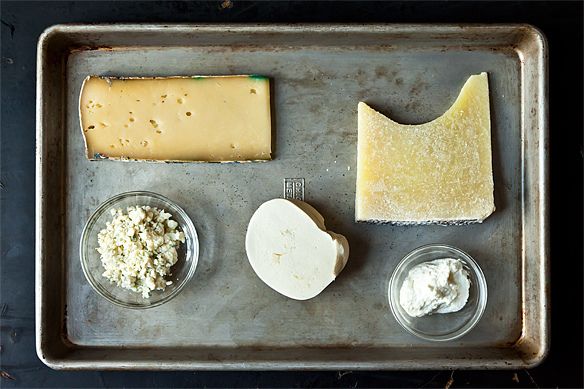Popular on Food52
9 Comments
Helen's A.
December 1, 2011
Wow! These are wonderful. I'm wondering if you could do another selection highlighting cheese makers in the US? There are so many of us foodies trying to eat more locally. I've found some great things in the New England area...
alasully
December 1, 2011
I love this idea! It would be great to source a list of local producers and if you have some New England favorites please pass them along to us!
TheCulinaryLibrarian
November 30, 2011
I ordered one of these slates on sale from GiltTaste yesterday for a friend's Christmas gift- I'm going to print this out and wrap it with the board!
nutcakes
November 29, 2011
Nothing much to add, just bragging....I was able to score Kerrygold Dubliner aged Cheddar 7oz and Silver Goat herb 5.5 oz from a bargain store for $1 each (supposedly expired but in great shape.) Also Timamook Smoked Black Pepper Wite Cheddar 8ox for $1, haven't trired it yet doesn't 'expire till January 25.. Also the same week I bought Humbolt Fog (my favorite goat cheese in California), and Lighthouse Bleu Cheese wedge from Iowa (4 oz for $2.59 ea), Rougette Bavarian Red triple cream (.35 oz fir $340) and 1/2 lb of Supreme Brie for $4.70,
We have already used some for a Wine and Cheese and now excited to use more for a upcoming party. I haven't had the chance to try them all yet.
We have already used some for a Wine and Cheese and now excited to use more for a upcoming party. I haven't had the chance to try them all yet.
mtrelaun
November 29, 2011
It really depends on whether the cheese is part of a buffet (1-1.5 oz per person,) served as a cocktail niblet (5 oz per,) or is part of an assortment that follows the main course (3.5 oz per.) Real Simple magazine has a formula if you don't feel like doing math: http://bit.ly/vmbRla
SaucyRedhead
November 28, 2011
I am pretty good at making an appetizing and interesting cheese plate, but I am often confused about portions for a large party. Does anyone have a guideline for this?







See what other Food52 readers are saying.